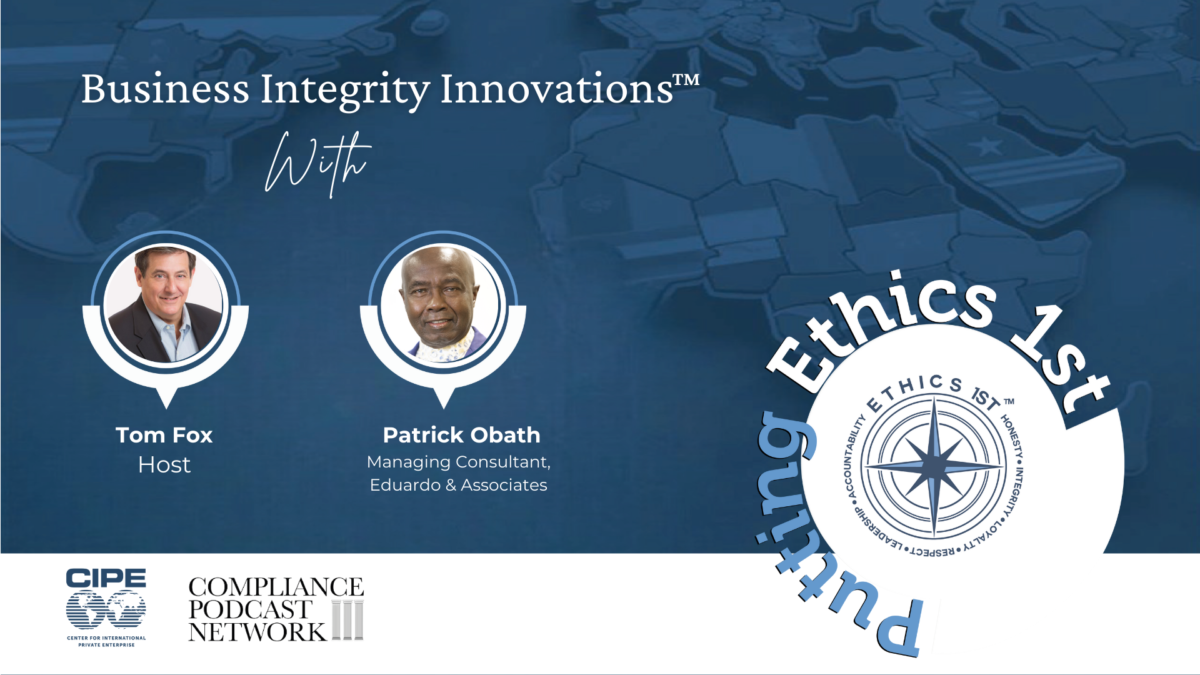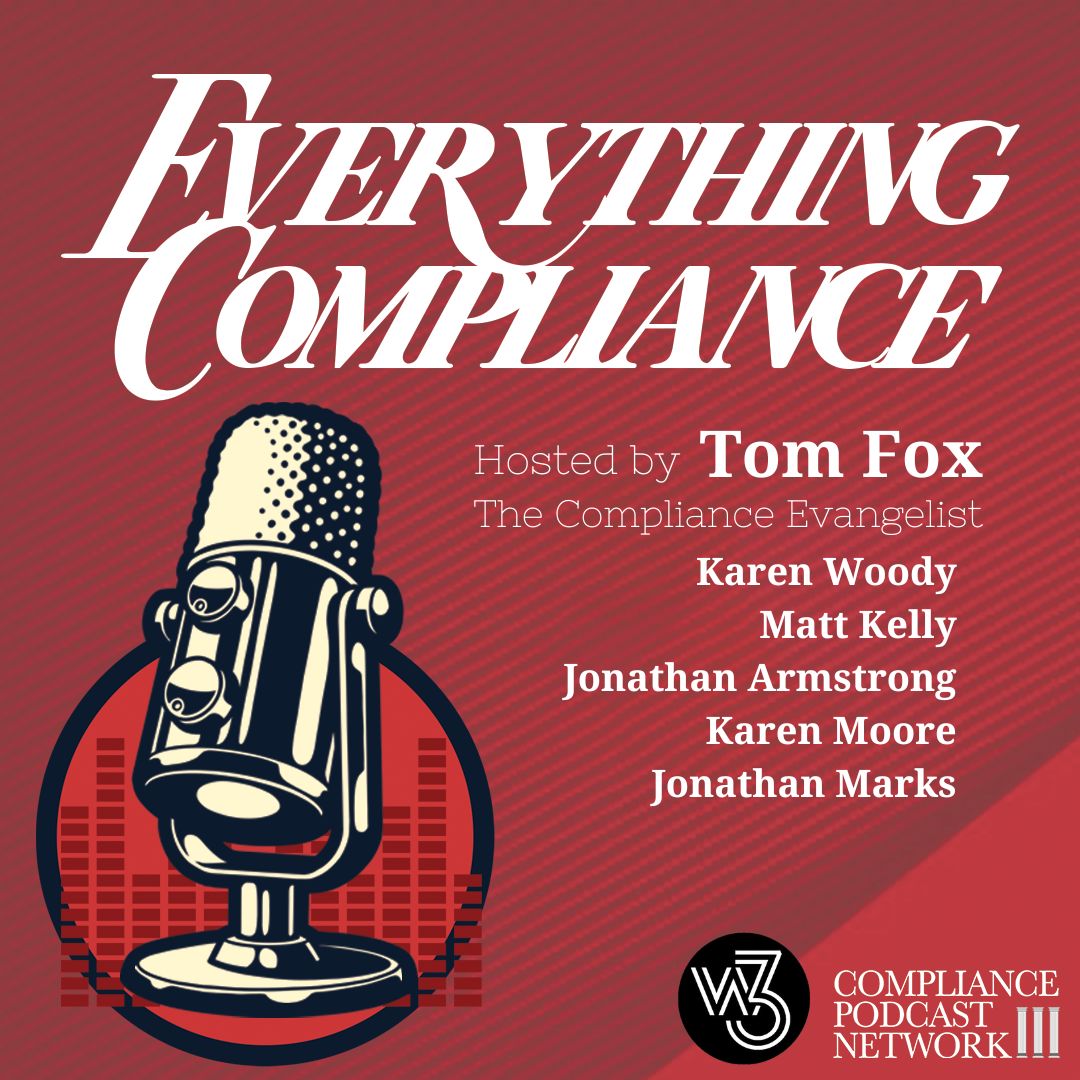A lawyer by training and an entrepreneur by vocation, Oonagh van den Berg founded the compliance consultancy and training firm RAW Compliance. She is a highly regarded international compliance professional with two decades of experience in London, Hong Kong, and Singapore.
Growing up in Northern Ireland against the violent backdrop of “The Troubles” during the tumultuous 1980s, she’s a veteran at weathering the sharp, harsh curveballs that life sometimes throws us. She went on to become a lawyer, compliance officer, recruiter, and later, a consultant and educator despite the hardships she encountered as a young girl, such as the Irish Republican Army shooting her police officer father.
This episode of Regulatory Ramblings is topical, timely, and deeply poignant. Oonagh talks to our host, Ajay Shamdasani, about the need for artificial intelligence (AI), mainly by international banking and financial institutions and multinational corporations more generally, to combat financial scams, deep fakes, and sextortion:
It is an issue that hit close to home earlier this summer as Oonagh while working to raise awareness of the matter, learned that her 13-year-old daughter and a few of her school friends became the victims of blackmail because of some innocent photos shared on Snapchat. Raising awareness, Oonagh says, can help prevent others from experiencing the same thing. She shares that RAW Compliance has been working on important awareness videos about social media scams and sextortion targeting pre-teens, teenagers, and young adults.
A recent poll by Europol revealed that cybercriminals are increasingly exploiting new technologies to commit complex and dangerous crimes – and, in many instances, using AI to commit vile acts of violation against the unwitting. For example, malicious large language models (LLM) are used to develop scripts, phishing emails, and online fraud advertisements and to overcome language barriers that allow sex offenders to groom victims in any language and impersonate peers.
Then there is the threat of generative AI because AI-altered and fully artificial child sexual abuse materials are now so realistic and used in sextortion cases that it has resulted in the blackmail and subsequent suicide of some victims.
Additionally, AI deepfakes are becoming more sophisticated and accessible. Such technologies make it vexatious for law enforcement to identify victims and find the appropriate legal framework to charge criminals. Yet, law enforcement has grown more tech-savvy and started using more advanced detection tools. It is still an uphill battle, however, as the authorities are all too often playing catch-up.
Oonagh also discusses her firm’s groundbreaking collaboration to support victims of financial scams and help recover their assets. Together with Nick Leeson, the infamous former 90s-era Barrings trader, the pair combine their expertise to make a tangible difference in the fight against financial fraud. (Links below)
Oonagh says it matters because “Financial scams leave lasting impacts and destroy lives, with little to no help available. Recovery can feel overwhelming. By joining forces, we aim to turn the tide and provide the help and guidance victims need to reclaim their financial futures.”
In her view, banks are not doing enough to help victims of financial scams, mainly due to shortcomings in their technology and fraud detection systems. In the UK, for example, financial crime is a growing issue, with over 3.5 million people affected by scams annually, leading to losses exceeding £1.2 billion.
The problem is equally severe in continental Europe, with countries like Ireland and the Netherlands reporting significant increases in scam-related incidents, resulting in hundreds of millions of euros in losses.
Similarly, in the US, financial scams cost consumers over $3.3 billion annually.
The conversation continues with Oonagh fleshing out how financial institutions can navigate evolving regulations and effectively monitor child sexual abuse materials (CSAM). She also discusses the challenges and strategies for investigating CSAM and human trafficking in traditional and decentralized financial systems. She emphasizes the hurdles of global technology in combating such crimes and estimates the value of suspected CSAM transactions using fiat versus cryptocurrency.
The discussion concludes with Oonagh pointing out that the financial sector has often shirked its responsibility when it comes to anti-money laundering, ‘pig butchering,” human trafficking, and financial scams. The sad truth is that many victims will never truly be made whole.
She stresses that when it comes to law enforcement and investigators, the biggest takeaway for traditional financial crime compliance professionals and blockchain investigators is understanding suspicious red flags and other typologies supporting investigations.
We are bringing you the Regulatory Ramblings podcasts with assistance from the HKU Faculty of Law, the University of Hong Kong’s Reg/Tech Lab, HKU-SCF Fintech Academy, Asia Global Institute, and HKU-edX Professional Certificate in Fintech.
Useful links in this episode:
-
Connect or follow Oonagh van den Berg on LinkedIn
-
RAW Compliance: Webpage
-
Oonagh van den Berg with Nick Leeson, through FundsRehab.com, offers support and solutions for those impacted by financial scams, guiding them through asset recovery. Assistance is available for those in need. FundsRehab.com is dedicated to combating financial fraud and driving change, with updates on their efforts on the website.
You might also be interested in:
-
Must have new book by Ross Buckley, Douglas Arner & Dirk Zetzsche – FinTech: Finance, Technology & Regulation
-
Building Better Financial Systems: FinTech Sustainability – Research
-
HKU-SCF Fintech Academy – website
-
Asia Global Institute – website
-
Most sought-after Fintech course on edX – Introduction to Fintech
Connect with RR Podcast at:
LinkedIn: https://hk.linkedin.com/company/hkufintech
Facebook: https://www.facebook.com/hkufintech.fb/
Instagram: https://www.instagram.com/hkufintech/
Twitter: https://twitter.com/HKUFinTech
Threads: https://www.threads.net/@hkufintech
Website: https://www.hkufintech.com/regulatoryramblings
Connect with the Compliance Podcast Network at:
LinkedIn: https://www.linkedin.com/company/compliance-podcast-network/
Facebook: https://www.facebook.com/compliancepodcastnetwork/
YouTube: https://www.youtube.com/@CompliancePodcastNetwork
Twitter: https://twitter.com/tfoxlaw
Instagram: https://www.instagram.com/voiceofcompliance/
Website: https://compliancepodcastnetwork.net/













